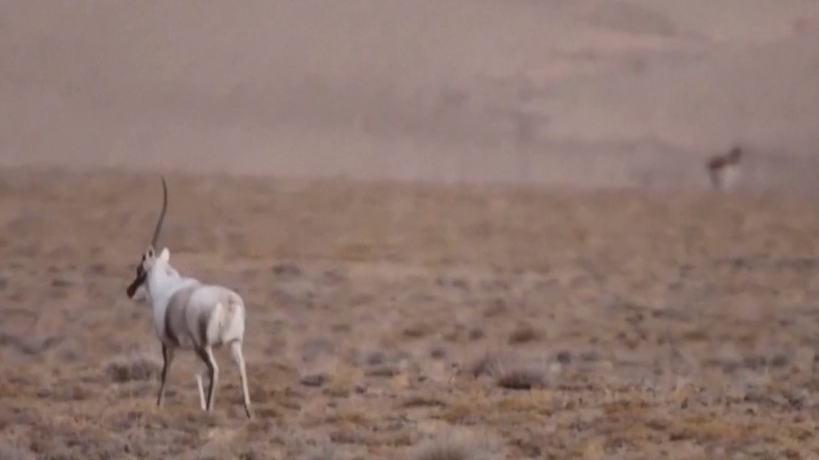00:44

Tibetan antelopes in the Altun Mountains National Nature Reserve in northwest China's Xinjiang Uygur Autonomous Region began their mating season in December.
Tibetan antelopes usually live in same-sex herds and only mix during the mating season, when the males chase as many females as possible.
Male Tibetan antelopes try to attract the opposite sex to form a small new group. During this season, a male antelope tries to keep its own females while attempting to lure away new female ones from other groups.
Fights will take place once another male enters its domain, which may result in injury or even death. The more capable and stronger ones will beat their opponents to mate and reproduce.
The males consume relatively less food during this period, and the physical exhaustion could be overwhelming, so they are often vulnerable to attacks from wolves and other natural enemies.
After the mating season is over, the males will disperse their females and dissolve their small groups. The females will then form a new group with other females and return to their normal life.
The distribution of the species has changed in the Altun Mountains National Nature Reserve, one of the important habitats for Tibetan antelopes. Most Tibetan antelopes used to live in the mountainous area in the western part of the reserve. But in the last two years, especially this year, they have been seen in the eastern part as well, with the number expanding from a few or a dozen to more than 200, according to researchers.
The latest data has brought the population of Tibetan antelopes in the nature reserve to 49,500, against 43,000 10 years ago.
(Cover image from a screenshot.)
(If you want to contribute and have specific expertise, please contact us at nature@cgtn.com.)

